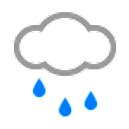If you plan to visit Kruger, South Africa in July, there are some things you should consider first. For a start there will be an influx of visitors, including lots of kids, due to the summer break. Secondly, July marks the cold and dry season, which brings average temperatures of 17C, and a lowest possible average of 7C. So, bring warm gear, especially for nighttime game drives.
Speaking of which, a nighttime game drive will offer a memorable and possibly mildly panic inducing! experience with your chances of spotting big game increased thanks to the dip in temperature and cover of darkness. They need to be booked in advance, so consider sorting this out as a matter of priority while planning your trip.
Others may choose to book a guided walk in the bush, which - as well as offering the opportunity to marvel at the diversity of the park's natural habitat and wildlife ill give you the chance to learn how to track wild animals. If you're lucky and your tracking skills are up to scratch! you may cross the path of lions, rhinos and elephants.
Regarding accommodation, Satara; being located in the middle of the park, is the camp to stay at if you really want to see big cats lions, leopards and cheetahs are the most commonly spotted cats at this location. There is also well stocked supermarket, restaurant, a pool, kids' playground and other facilities if the chance to clap eyes on a leopard isn't enough to keep you happy
Punda Maria is in the northern area of the Kruger Park. Impalas, elephants, zebras and other wildlife can be seen in this area. Should you come in winter, you'll see many plants some of which are unique to this part of the world.























